Video of the Week:
Tips for Using Drop or Broadcast Spreaders
Vegetables:
Harvesting Sweet Potatoes
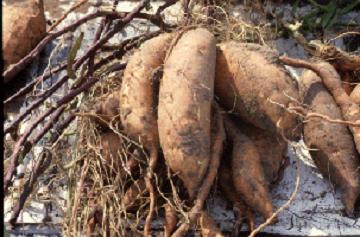
Sweet potatoes should be cured after being dug. The digging process often damages the tender skin, and curing helps these small wounds heal. Place the roots in a warm, humid location for 5 to 10 days immediately after digging. A location with a temperature around 85 to 90 degrees is ideal. A space heater can be used to heat a small room or other area. Raise the humidity by placing moist towels in the room. The curing process not only heals wounds but also helps convert starches to sugars. This process improves the texture and flavor of the roots.
Sweet potatoes should be stored above 55 degrees. Storage at temperatures below that injures the roots, shortens storage life and gives them an off flavor. (Ward Upham)
Ornamentals:
Planning for Spring Color
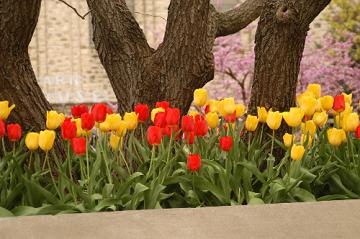
First of all, what can you plant now (September to November—before the ground freezes) that will emerge in the spring? From first appearance to last appearance we have crocus, grape hyacinth (Muscari), daffodil, hyacinth and tulip. Before we get carried away with the garden possibilities, it’s important to know a few things about choosing, planting and caring for bulbs. For the best show you’ll want to purchase the largest bulbs you can find that are appropriate for that variety. Healthy bulbs will be firm, have a thin, papery covering on the outside, be free of bruises, mechanical damage and/or signs of mold or mildew. Avoid bulbs with green tips peeking out since these plants are coming out of dormancy too early. Follow the directions on the bulb package for planting depth. They may benefit from some fertilizer and, like other plants, will need a little water in the winter.
Technically a “corm” rather than a “bulb,” crocus are the first to bloom in the spring and are sold alongside other spring-flowering bulbs in stores. They are short little plants that range in color from dark blue, purple, white, cream, yellow and orange. Grape hyacinths are hot on the tails of crocus and complement them nicely with their bottle-brush heads in blues and whites. Daffodils are next and come in many colors and petal types, most often yellow and single, but there are plenty of really neat cultivars. They are great for naturalizing (spread randomly around the garden and let them grow at their own pace) and deer avoid them.
Hyacinth and tulip are among the last to put on a big show of early spring color. As you know, the common oriental hyacinth is very fragrant. If you aren’t able to plant any in the fall, there are always some in full bloom available for impulse purchase near checkout lanes at the grocery store. Indulge yourself, my friend.
Tulips come in many, many sizes and colors. I freely admit to being overwhelmed by choice when it comes to tulips, but you can’t really go wrong with them in the landscape. Just remember that they look amazing when massed together for big swaths of color. Tulips require a long chilling period so get them in the ground as soon as possible. They may also require more frequent dividing in order to maintain large blooms in subsequent years. Or, you can always replant with fun, new selections.
If you just don’t get around to planting any bulbs this year, never fear. You can always purchase some in the spring for container gardens or forcing indoors (hello January project). With a little planning ahead and working in your yard (or containers) while it’s beautiful out this coming season, you can enjoy a great show next spring. You’ll be so grateful that you got some bulbs planted this fall—get to it! (Cheryl Boyer)
Pests:
Budworm on Garden Plants
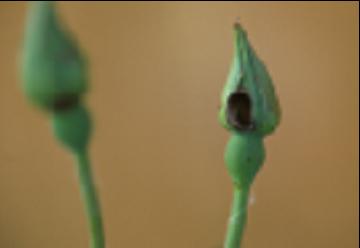
Damaged buds often fail to open. Those that do will show evidence of feeding on the petals. Damage normally peaks in late summer because of increased numbers from the second generation.
Control of the budworm is difficult. Handpicking at dusk can be effective on small plantings. For larger plantings, chemical control may be the only practical option. Look for products with synthetic pyrethroid active ingredients such as permethrin, esfenvalerate, cyfluthrin, bifenthrin, lambda-cyhalothrin or related compounds. Spinosad (Borer, Bagworm, Leafminer and Tent Caterpillar Spray; Captain Jack's Dead Bug Brew) is also recommended.
Severe winters can be a natural form of control from one year to the next. Temperatures below 20 degrees F are hard enough to kill overwintering pupa. Because pupal cases are usually 2 to 6 inches deep, most exposed areas in Kansas will provide good control during a cold winter. Microclimates next to heated buildings may allow survival. (Ward Upham)
Miscellaneous:
Ornamental Sweet Potatoes
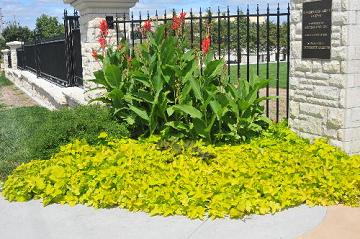
Harvesting and Roasting Sunflower Seeds
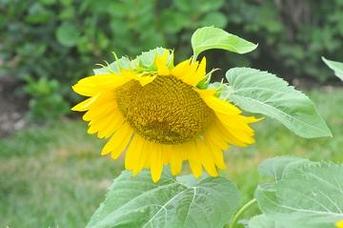
Check for maturity by looking for the following signs:
– Florets in the brown center of the flower disk should be shriveled.
– Heads should have turned down.
– The backside of the head should be lemon yellow.
The ultimate check, of course, is to pull a few seeds to see if they have turned black with white stripes, the typical color. Empty shells usually indicate a lack of pollination earlier in the year. If heads are to remain uncovered, harvest when a few seeds start turning black and white. The flavor will not be good as when seeds are allowed to ripen on the plants, but fewer seeds will be lost.
Cut the heads and place in a paper sack. Some people prefer to cut the heads with about a foot of stem attached and hang them upside down in a dry, well-ventilated area. A paper bag or cheesecloth can be placed over the heads to prevent seeds from dropping as they dry. Seeds can be easily removed from dry heads by rubbing gently.
Roasting Seeds:
Raw, mature seeds may be prepared at home by covering unshelled seeds with salted water (2quarts of water to 1/4 to 2 cup salt). Bring to a boil and simmer 2 hours, or soak in the salt solution overnight. Drain and dry on absorbent paper.
Put sunflower seeds in a shallow pan in a 300-degree F oven for 30 to 40 minutes or until golden brown, stirring occasionally. Take seeds out of the oven and add 1 teaspoon of melted butter or margarine, or cooking oil per 1 cup of seeds if they are to be eaten immediately. Stir to coat. Put on an absorbent towel. Salt to taste. (Ward Upham)
Reblooming Thanksgiving and Christmas Cacti
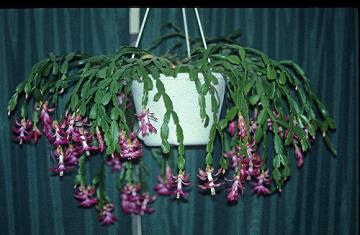
Flowering will not occur unless induced by temperature and light treatment. If the temperature is held at 50 to 55 degrees F, flowering will occur regardless of day length. But flowering usually is not uniform. Temperatures below 50 degrees F prevent flowering. Nights greater than 12 hours long and temperatures between 59 and 69 degrees also can generate flowers. Twenty-five consecutive long nights is enough for flower initiation. Nights will naturally become greater than 12 hours close to the fall equinox, which is on September 23 this year. A plant receiving natural sunlight but no artificial light during night hours, will have this 25-day requirement met about October 20. It takes an additional nine to 10 weeks for flowers to complete development and bloom.
Both of these cacti like bright indirect light. Too much sun may cause leaves to turn yellow. Common household temperatures are fine. Keep soil constantly moist but not waterlogged. These plants seem to flower best if kept a little pot bound. If you need to repot, try waiting until spring. (Ward Upham)
Contributors: Cheryl Boyer, Nursery Crops Specialist; Ward Upham, Extension Associate
 RSS Feed
RSS Feed
